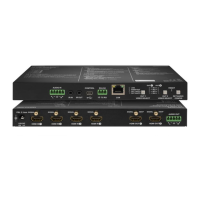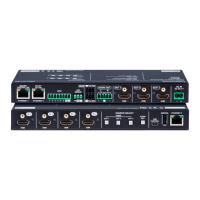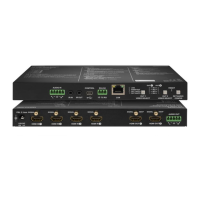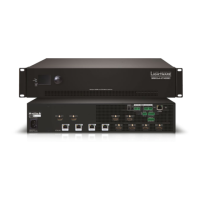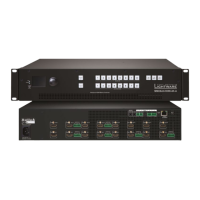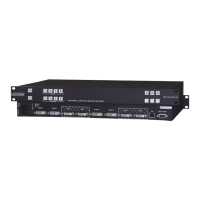MMX6x2-HT
User’s Manual
Section 3. Technologies Page 17 / 119
3.4.2. Real life examples
HDCP compliant sink
Figure 3-2. HDCP-compliant sink
All the devices are HDCP-compliant, no manual setting is required, both protected and
unprotected content is transmitted and displayed on the sink.
Not HDCP-compliant sink 1.
Figure 3-3. Not HDCP-compliant sink displaying unprotected content
Not-HDCP compliant sink is connected to the matrix. Some sources (e.g. computers)
always send HDCP encrypted signals if the receiver device reports HDCP compliancy,
however, HDCP encryption is not required all the time (e.g. computer desktop image). If
HDCP is enabled in the matrix, the image will not be displayed on the sink.
Setting the HDCP parameter to Auto on the output port and disable HDCP on the input
port, the transmitted signal will not be encrypted if the content is not protected. Thus, non-
HDCP compliant sinks will display non-encrypted signal.
Not HDCP-compliant sink 1.
Figure 3-4. Not HDCP-compliant sink and protected content
The layout is the same as in the previous case: non-HDCP compliant display device is
connected to the matrix but the source would send protected content with encryption. If
HDCP is enabled on the input port of the matrix, the source will send encrypted signal. The
sink is not HDCP compliant, thus, it will not display the video signal (but
blank/red/muted/etc. screen). If HDCP is disabled on the input port of the matrix, the source
will not send the signal. The solution is to replace the display device to an HDCP-capable
one.
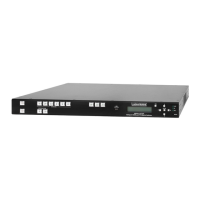
